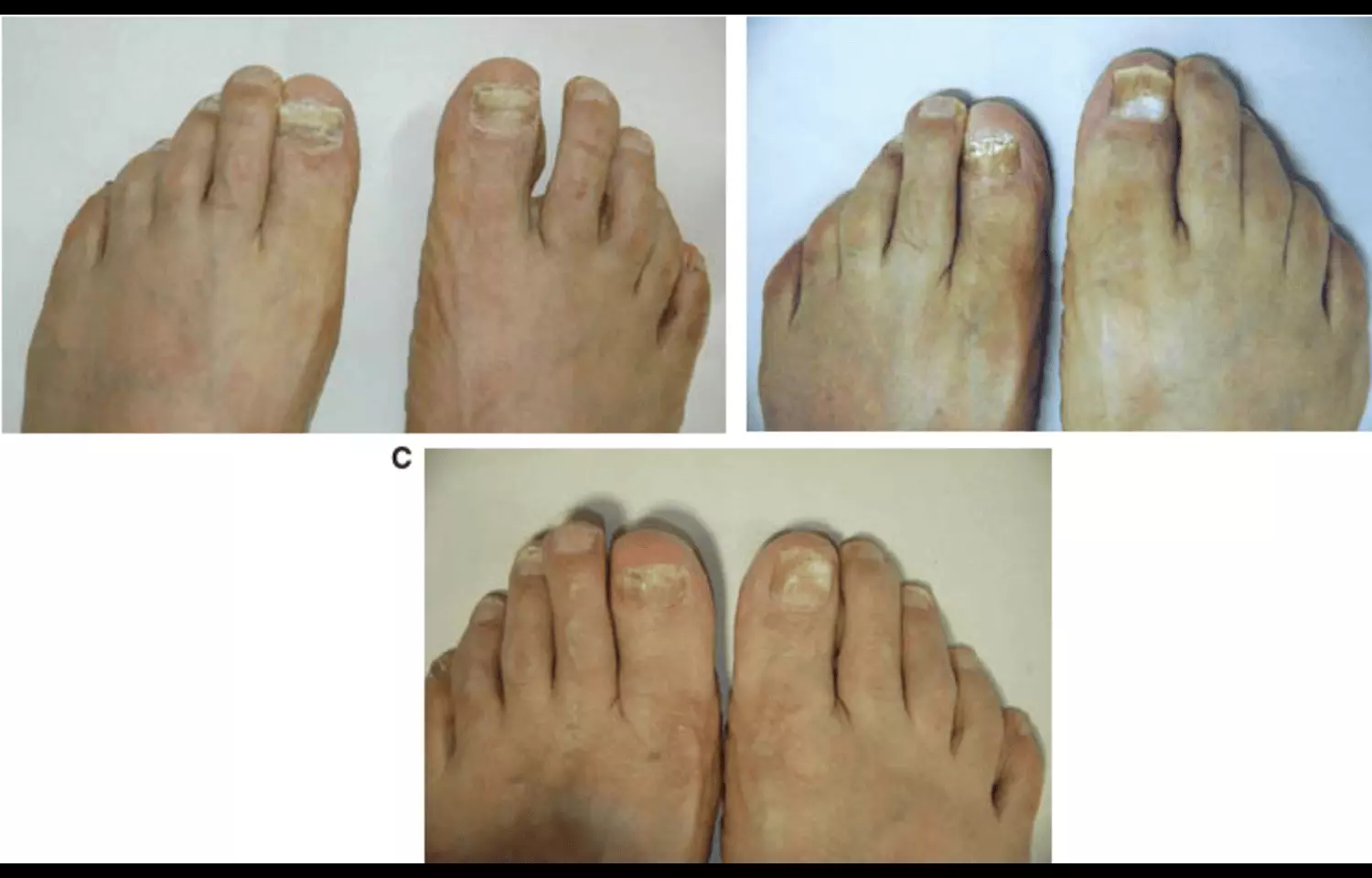Crisaborole Boosts Effectiveness of Amorolfine in Keratinized Tinea Foot: Study
- byDoctor News Daily Team
- 25 September, 2025
- 0 Comments
- 0 Mins

Researchers have found in a new study that adding two percent crisaborole ointment to amorolfine hydrochloride cream significantly enhances therapeutic outcomes in the management of keratinized tinea foot. Tinea foot, a common superficial fungal infection caused by dermatophytes, often presents in a chronic keratinized form where thickened skin and scaling limit the penetration and efficacy of topical antifungal treatments. Amorolfine hydrochloride, a well-established antifungal agent, is effective against dermatophytes but faces challenges in achieving optimal results in heavily keratinized lesions due to poor drug penetration. The study explored whether the phosphodiesterase-4 (PDE4) inhibitor crisaborole, known for its anti-inflammatory and skin barrier–modulating properties, could improve outcomes when combined with amorolfine. The combination therapy demonstrated superior antifungal activity, greater improvement in lesion clearance, and better patient-reported symptom relief compared with amorolfine monotherapy. The enhanced effectiveness is thought to stem from crisaborole’s ability to reduce inflammation, soften hyperkeratotic tissue, and improve drug absorption, thereby allowing amorolfine to penetrate more effectively into the infected areas. Importantly, the combination was well tolerated, with no significant increase in adverse effects, supporting its safety for clinical use. These findings suggest that dual therapy with crisaborole and amorolfine may provide a more effective option for patients with keratinized tinea foot, a condition that is often resistant to standard topical treatments and requires prolonged therapy. The results also open avenues for exploring similar combination approaches in other keratinized fungal infections where topical antifungal penetration is limited. Clinicians may consider the combined regimen as part of personalized treatment strategies, particularly for patients with chronic or recurrent infections. However, the researchers emphasized the need for larger randomized controlled trials to validate these results, assess long-term efficacy, and determine whether the combination can reduce recurrence rates. Keywords:Crisaborole, amorolfine, keratinized tinea foot, dermatophyte infection, topical antifungal therapy, combination treatment, PDE4 inhibitor, skin barrier, hyperkeratosis, clinical effectiveness
Disclaimer: This website is designed for healthcare professionals and serves solely for informational purposes.
The content provided should not be interpreted as medical advice, diagnosis, treatment recommendations, prescriptions, or endorsements of specific medical practices. It is not a replacement for professional medical consultation or the expertise of a licensed healthcare provider.
Given the ever-evolving nature of medical science, we strive to keep our information accurate and up to date. However, we do not guarantee the completeness or accuracy of the content.
If you come across any inconsistencies, please reach out to us at
admin@doctornewsdaily.com.
We do not support or endorse medical opinions, treatments, or recommendations that contradict the advice of qualified healthcare professionals.
By using this website, you agree to our
Terms of Use,
Privacy Policy, and
Advertisement Policy.
For further details, please review our
Full Disclaimer.
Recent News
Merck Keytruda wins European Commission nod for lo...
- 30 October, 2025
UP NEET 2025 round 3 allotment results postponed
- 30 October, 2025
Achin Gupta to succeed Umang Vohra as Cipla MD, GC...
- 30 October, 2025
Mumbai shocker: KEM Hospital doctor stabbed by col...
- 30 October, 2025
Daily Newsletter
Get all the top stories from Blogs to keep track.


0 Comments
Post a comment
No comments yet. Be the first to comment!